Discover 20 hidden attractions, cool sights, and unusual things to do in Augusta (United States). Don't miss out on these must-see attractions: Augusta Civic Center, Maine State House, and The Blaine House. Also, be sure to include Old Fort Western in your itinerary.
Below, you can find the list of the most amazing places you should visit in Augusta (Maine).
Table of Contents
Augusta Civic Center
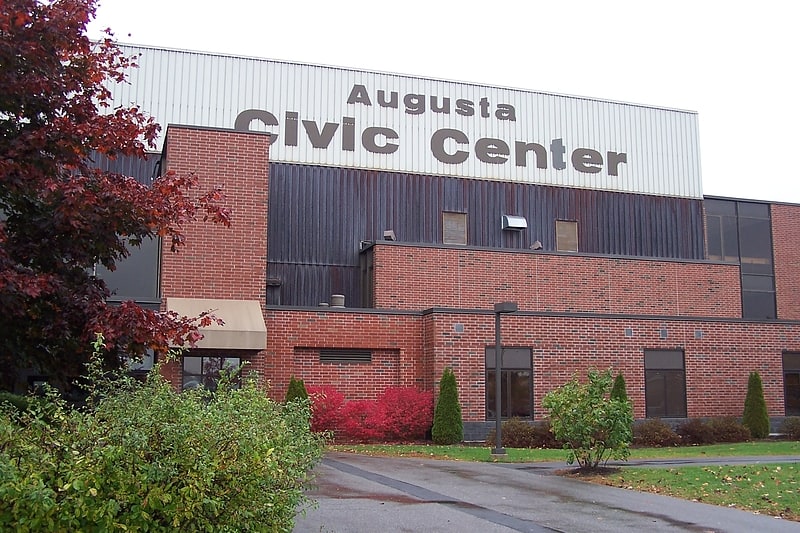
Convention center in Augusta, Maine. The Augusta Civic Center is a convention center located in Augusta, Maine. It has a total of 49,000 square feet and 26 rooms. The main room is 32,000 sq ft. The facility includes a main auditorium, two ballrooms, and 23 meeting rooms and full catering services. The arena can host many events such as concerts, gatherings and sporting events.[1]
Address: Augusta, 76 Community Dr, Augusta, ME 04330-8008
Maine State House

Building in Augusta, Maine. The Maine State House in Augusta, Maine, is the state capitol of the State of Maine. The building was completed in 1832, one year after Augusta became the capital of Maine. Built using Maine granite, the State House was based on the design of the Massachusetts State House.
Governor Janet Mills and the Maine Legislature convene at the State House.[2]
Address: State Street, 04330-6845 Augusta
The Blaine House
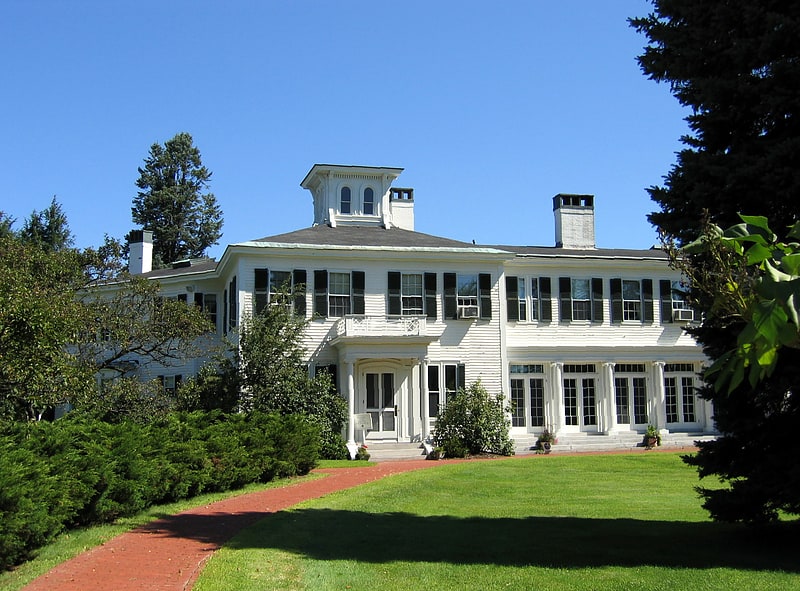
Building in Augusta, Maine. The Blaine House, also known as James G. Blaine House, is the official residence of the governor of Maine and their family. The executive mansion was officially declared the residence of the governor in 1919 with the name "Blaine House". It is located at Capitol and State streets in Augusta, across the street from the Maine State House.
The Blaine House was donated to the State of Maine for use as a governor's residence by Harriet Blaine Beale in 1919. The house dates back to 1833 and was built by James Hall, a retired ship's captain. James G. Blaine, then the Speaker of the Maine House of Representatives, purchased it in 1862 as a present for his wife, the former Harriet Stanwood, daughter of a prominent Augusta family. Blaine substantially enlarged the building, constructing an addition at the rear that was a near replica of the original structure, and removing interior walls to create a large entertainment space.
During World War I the house was used by Maine's Committee for Public Safety. It was presented to the State by Blaine's youngest daughter, Mrs. Harriet Blaine Beale, and established by the 1919 Legislature as the official residence of the governor of Maine. It was remodeled, to designs by the noted Maine architect John Calvin Stevens, prior to the first governor taking residence in 1921. Carl E. Miliken was the first governor to occupy the residence.
The Blaine House was declared a National Historic Landmark in 1964, for its association with Blaine, an influential political and diplomatic figure on the national stage in the decades following the Civil War.
In June 2014, a system of high efficiency heat pumps was installed in the Blaine House in an effort to reduce the heating bill, after a test of one over the winter in the governor's sleeping quarters. With heating oil, the Blaine House used 5,074 gallons of oil at a cost of $16,775 in 2013. The oil boiler is also going to be converted to natural gas in a further effort to reduce costs, though that system will only be needed on the coldest days. The total cost of the upgrades is expected to be $115,000.
The current residents are Governor Janet Mills and her family.[3]
Address: 192 State St, 04330-6406 Augusta
Old Fort Western
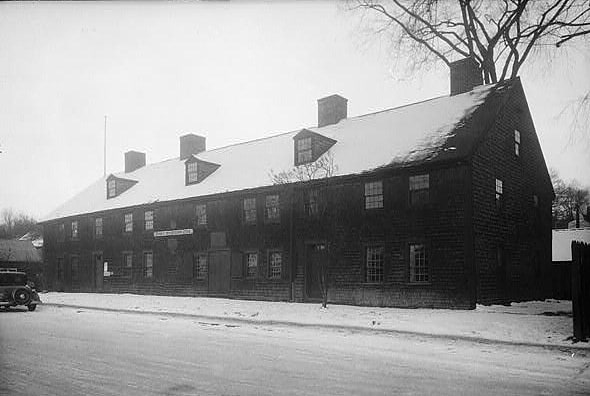
Building in Augusta, Maine. Fort Western is a former British colonial outpost at the head of navigation on the Kennebec River at modern Augusta, Maine, United States. It was built in 1754 during the French and Indian War, and is now a National Historic Landmark and local historic site owned by the city. Its main building, the only original element of the fort to survive, was restored in 1920 and now depicts its original use as a trading post.[4]
Address: 16 Cony St, 04330 Augusta
Maine State Museum
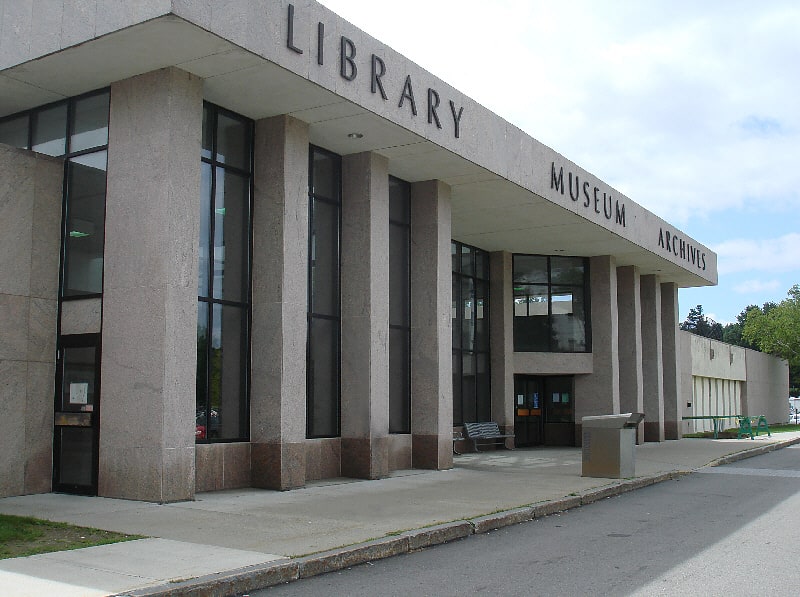
Museum in Augusta, Maine. The Maine State Museum is the official Maine government's museum and is located at 230 State Street, adjacent to the Maine State House, in Augusta. It collections focus on the state's pre-history, history, and natural science.
Permanent exhibits include dioramas of Maine's animals, birds and plants in different ecosystems; gems and minerals; displays about the state's natural resources and industries, including forestry, granite, fishing, and agriculture; Clovis culture and archaeological artifacts; and settlement and state history. There is also a working three-story water-powered woodworking mill, and craftsmen's work areas.
The current director of the Museum is Bernard Fishman.[5]
Address: 230 State St, 04330 Augusta
Capitol Park
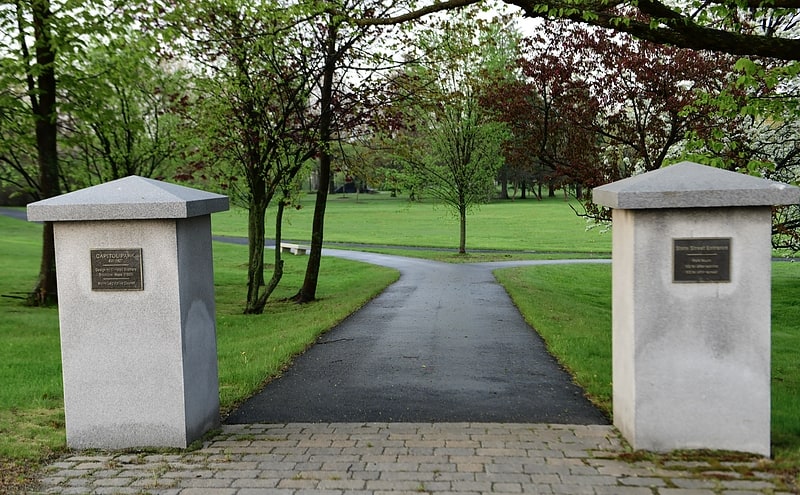
Park in Augusta, Maine. Capitol Park is a state-owned public park in Maine's state capitol complex on the west side of Augusta, Maine. Set aside in 1827, when the complex was established, the park, set between the Maine State House and the Kennebec River, served as a parade ground and encampment site during the American Civil War, and saw agricultural use before being formally designed as a park in the 1920s by the Olmsted Brothers. The park was listed on the National Register of Historic Places in 1989.[6]
Viles Arboretum

Arboretum in Augusta, Maine. The Viles Arboretum 224 acres is a botanical garden and arboretum located in Augusta, Maine, United States, with 5 miles of trails, open year round without charge. The plant collection contains over 300 species or varieties of trees and shrubs. The forested portion of the Arboretum is a certified Tree Farm Demonstration Area containing many of Maine's native trees.
The Arboretum's principal tree collections and gardens are as follows:
- Urban & Community Forestry Demonstration Area — The Arboretum's largest collection; over six dozen specimens chosen for their durability in the urban environment.
- Conifer Collection — North American varieties chosen for interesting characteristics (like the weeping white pine), and other species from around the world.
- Governors Grove — Over 60 Eastern White Pine, Maine's state tree, each planted in honor of one of Maine's governors.
- Chestnut Collection — A display of the American chestnut and its close relatives. With help from The American Chestnut Foundation, the Arboretum is developing a Chestnut Plantation with seedlings representing all of Maine's surviving American Chestnuts.
- Daughters of the American Revolution Historical Gardens — Chosen for aesthetic, medicinal, culinary and home-use qualities, these flowers, herbs and shrubs would have been found in gardens around the time of the American Revolution.
- Lilac Collection — A collection of lilac varieties blooming white, pink and purple in May.
- Hosta Garden — Winding through the shade of a white birch grove, this collection of hosta varieties, one of the largest in Maine, was donated by the Case Estate of the Arnold Arboretum in Massachusetts.
- Native Plant Garden — This newest garden has been incorporated into the landscaping for the new Education Wing of the Viles Visitors Center. It features native plants that are readily available from Maine garden centers and nurseries and encourages visitors to consider using more native plants in their home landscape and avoid using non-native plants that may escape into the wild.
Address: 153 Hospital St, 04330-0700 Augusta
Capitol Complex Historic District
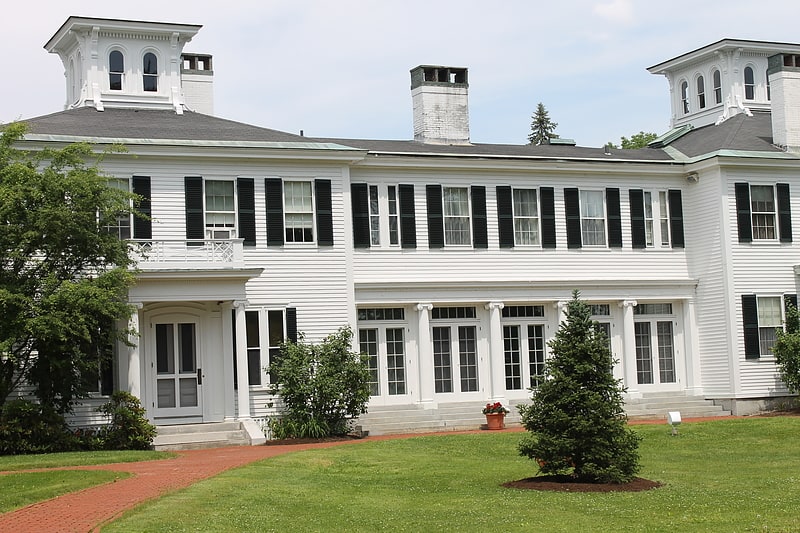
Historical place in Augusta, Maine. The Capitol Complex Historic District encompasses the principal historic elements of Maine's state administration complex at Capitol and State Streets in Augusta, Maine. Included in the district are the Maine State House, Capitol Park, The Blaine House, the Burton Cross Office Building, and a number of state-owned 19th century residences in the vicinity of the Blaine House. The district was listed on the National Register of Historic Places in 2001.[8]
Colonial Theater

Theater. The Colonial Theater is a historic movie theater at 139 Water Street in downtown Augusta, Maine. Built in 1913 and rebuilt after a fire in 1926, it is a fine example of Beaux Arts architecture, with features presaging the Art Deco movement. It is the last surviving movie theater building in downtown Augusta. It was listed on the National Register of Historic Places in 2014, at which time had been standing vacant for many years.[9]
St. Mary's Church
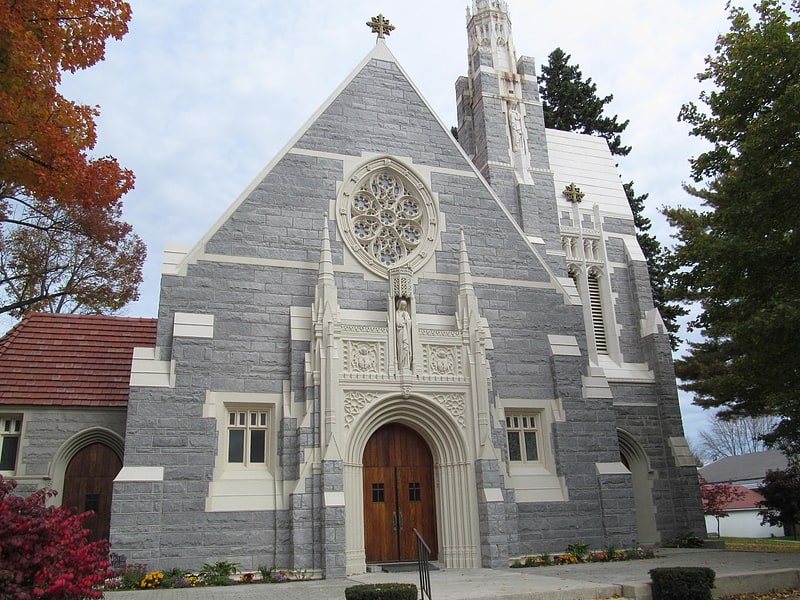
St. Mary's Church is a Roman Catholic church at 41 Western Avenue in Augusta, Maine. Built in 1926, it is one of the city's finest examples of Gothic Revival architecture. It was listed on the National Register of Historic Places in 1987.[10]
Maine State Library

Public library in Augusta, Maine. The Maine State Library is housed in the Cultural Building at the State House facility in Augusta, Maine along with the Maine State Museum and Maine State Archives.[11]
Old Post Office
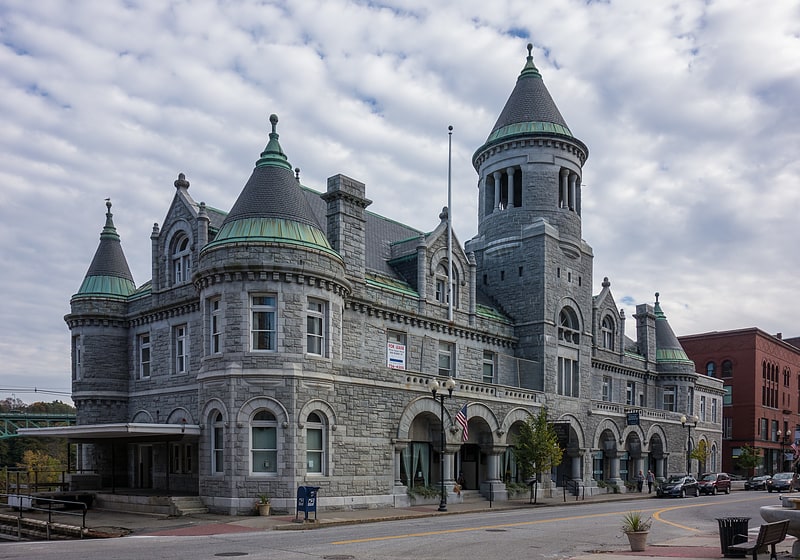
The Old Post Office and Court House is a historic former federal government building at 295 Water Street in downtown Augusta, Maine. Built in 1886-1890, it is one of Maine's finest surviving examples of Romanesque Revival architecture. It was listed on the National Register of Historic Places in 1974.[12]
St. Mark's Episcopal Church

Building. St. Mark's Episcopal Church was a historic church at 9 Summer Street in Augusta, Maine, just west of downtown. The congregation, founded in 1840, occupied an 1886 Gothic Revival stone building designed by Richard M. Upjohn and listed on the National Register of Historic Places in 1984 for its architecture. The congregation moved out in 2015.[13]
South Parish Congregational Church and Parish House
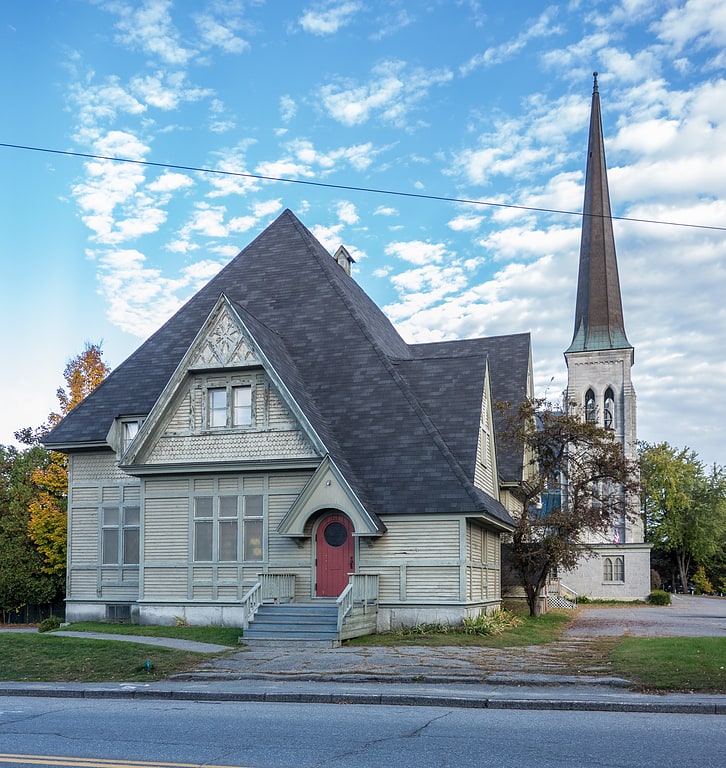
The South Parish Congregational Church and Parish House is a historic church at 9 Church Street in Augusta, Maine. Built in 1865, the church is a major Gothic Revival work of Maine's leading mid-19th century architect, Francis H. Fassett, and its 1889 parish house, designed by James H. Cochrane, is a rare example in the state of Stick style architecture. The property was listed on the National Register of Historic Places in 1980. The congregation was established in 1773, when the area was part of Hallowell.[14]
Former Augusta City Hall
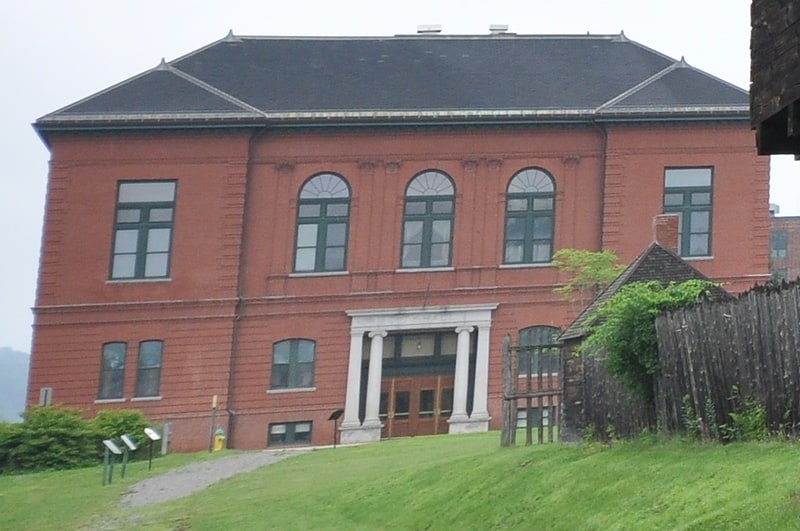
The Former Augusta City Hall is located at 1 Cony Street in Augusta, Maine. Built in 1895-96, it is a well-preserved local example of civic Renaissance Revival architecture, and served as Augusta's city hall until 1987. The building, now an assisted living facility called The Inn At City Hall, was listed on the National Register of Historic Places in 1997.[15]
All Souls Church
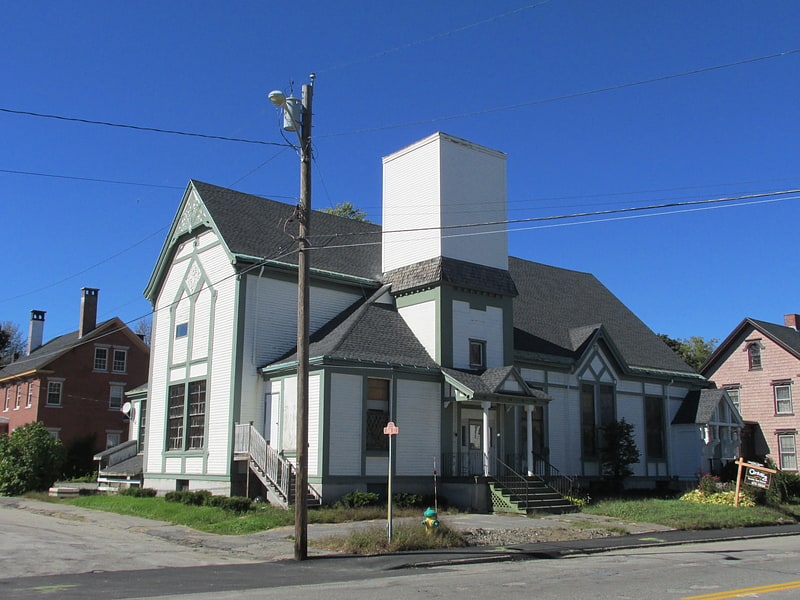
Church building in Augusta, Maine. The All Souls Church is a historic former church building at 70 State Street in Augusta, Maine. Built in 1879, it is one of Maine's finest examples of Stick style architecture. The building was listed on the National Register of Historic Places in 1978.[16]
Cushnoc Archeological Site
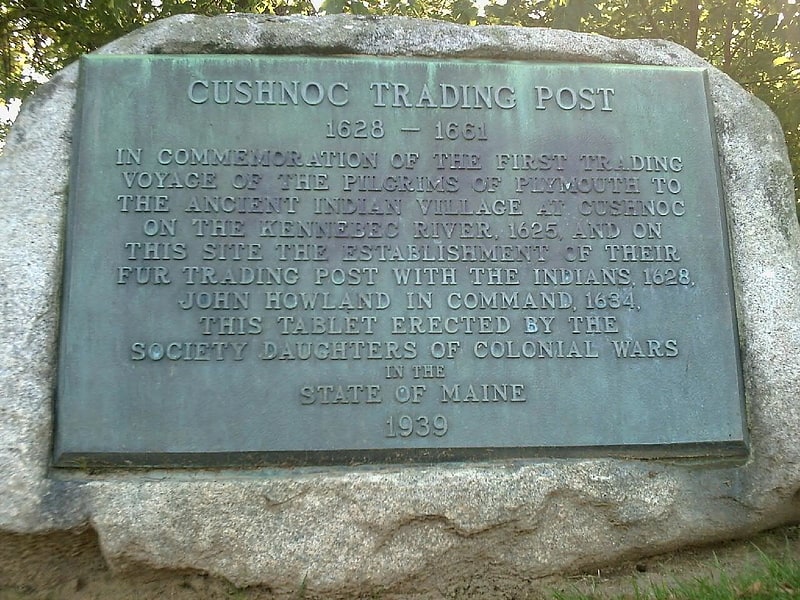
Archaeological museum in Augusta, Maine. The Cushnoc Archeological Site, also known as Cushnoc or Koussinoc or Coussinoc, is an archaeological site in Augusta, Maine that was the location of a 17th-century trading post operated by English colonists from Plymouth Colony in present-day Massachusetts. The trading post was built in 1628 and lies on the Kennebec River. The English primarily traded with bands of the Abenaki nation.
Later the British colonists developed Fort Western, an 18th-century stockade fort, adjacent to this site. It became the center of development for the city of Augusta. The Cushnoc site is significant as it provides a window into trading, living, and construction practices in the early period of colonial settlement in New England. It was declared a National Historic Landmark in 1993.[17]
Lithgow Public Library
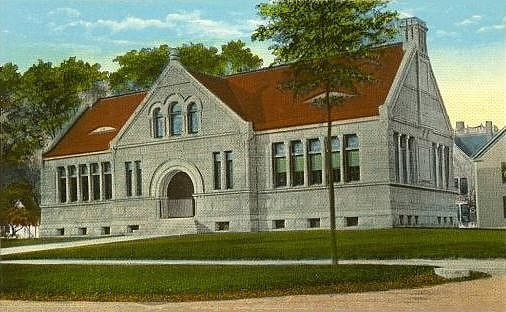
Public library in Augusta, Maine. The Lithgow Public Library is the public library of Augusta, Maine. Established in 1896, and expanded in 1979 and 2016, it holds about 67,000 books.[18]
Tappan-Viles House
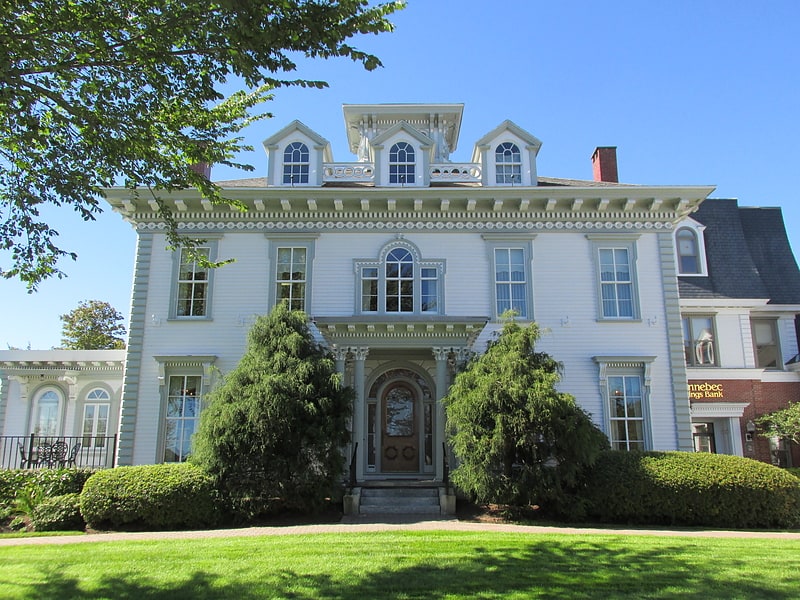
The Tappan-Viles House is a historic house at 150 State Street in Augusta, Maine. Built in 1816 and restyled several times, the house exhibits an eclectic combination of Federal, Italianate, and Colonial Revival styles, the latter contributed by architect John Calvin Stevens. The house was listed on the National Register of Historic Places in 1982; it is now part of a bank complex.[19]
Vickery Building
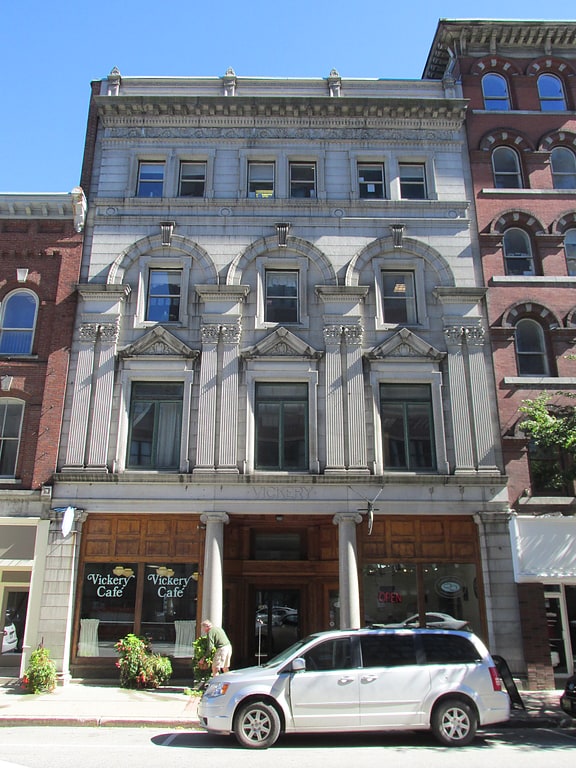
Historical landmark in Augusta, Maine. The Vickery Building is a historic commercial building at 261 Water Street in downtown Augusta, Maine. Built 1895 to a design by John C. Spofford, it is one of the downtown's few granite commercial buildings, built for Peleg O. Vickery, a leading publisher and three-term mayor of the city. It was listed on the National Register of Historic Places in 1984.[20]